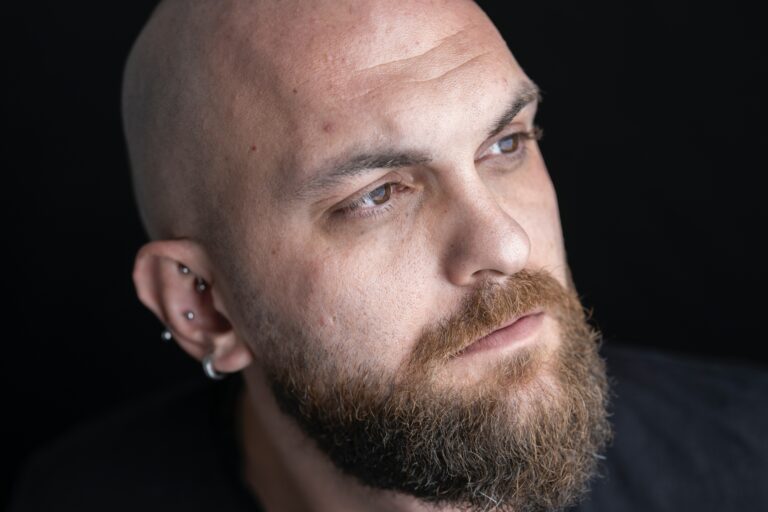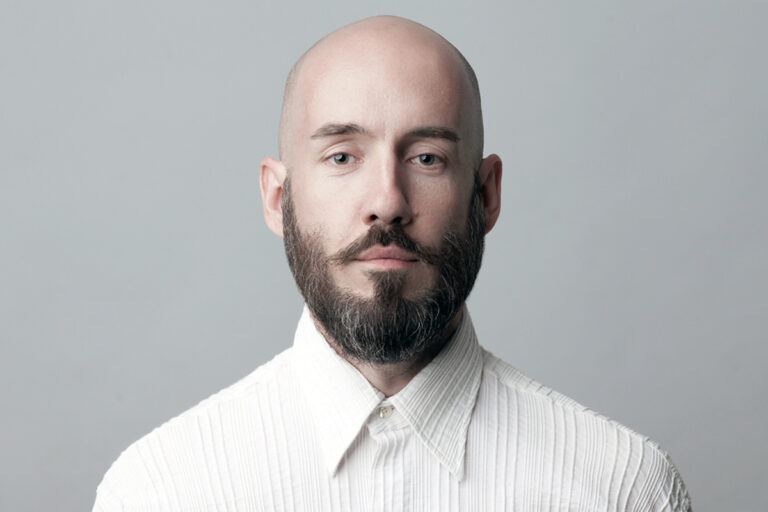Hair Loss Statistics in 2024 (Latest U.S. & Global Data)

Hair loss is a common occurrence that can happen for various reasons, including genetics, hormonal changes, and other factors.
Despite it being common, any hair loss is distressing and may have a significant effect on the quality of life.
Let’s explore the data.
Hair Loss Statistics
- About 1 in 4 Americans (80 million) suffer from some degree of hair loss.
- 66% of men will suffer from male pattern baldness by age 35.
- 25% of women will suffer from female pattern hair loss by age 49.
- 95% of all hair loss is caused by genetics (pattern hair loss).
- The average person has 100K hairs on their head and loses 100 strands a day.
- Clinical research suggests that smoking is linked to hair loss.
- Top hair loss treatments are Finasteride (69%), Minoxidil (53%), and PRP (48%).
- 700,000+ surgical hair restoration procedures are performed each year worldwide.
- The average cost of a hair transplant surgery is between $4,000 to $15,000.
- The global hair loss market size was $52 billion in 2022.
1. About 1 in 4 Americans (80 million) suffer from some degree of hair loss.
According to Cleveland Clinic statistics on hair loss (2023), pattern baldness (androgenic alopecia) affects an estimated 80 million individuals in the U.S. (1)
| Baldness in the U.S. | Men | Women |
| 80 million | 50 million | 30 million |
And according to the U.S. Census Bureau, the U.S. population is currently about 335 million people. (2)
Hair loss prevalence: This means about 24% of Americans suffer some degree of hair loss today. (3)
Male pattern baldness (MPB) affects about 50 million men in the U.S.
Female-pattern hair loss (FPHL) affects about 30 million women in the U.S.
What are the Common Types of Hair Loss?
- Androgenic alopecia: Most common form of hereditary baldness (male pattern baldness or female pattern hair loss).
- Alopecia areata: Alopecia areata is an autoimmune disease that results in hair loss from the head and body.
- Telogen effluvium: This type of hair loss involves rapid shedding of hair in a short amount of time. Often seen as hormonal or stress-related hair loss.
- Anagen effluvium: This very rapid hair loss occurs due to certain medical treatments, such as chemotherapy. Sometimes called chemotherapy-induced hair loss.
- Traction alopecia: Hair loss caused by excessive and prolonged tension or pulling on the hair, often due to hairstyles like tight braids, ponytails, or hair extensions.
- Alopecia totalis: An autoimmune condition where there is a complete loss of hair on the scalp, resulting in total baldness.
2. 66% of men will suffer from male pattern baldness by age 35.
According to the American Hair Loss Association male hair loss statistics, about 66% of American men experience some degree of appreciable hair loss by the age of 35 due to male pattern baldness. (4)
| By | Of men | Male pattern baldness |
| Age 21 | 25% | Start first losing their hair |
| Age 35 | 66% | A degree of appreciable hair loss |
| Age 55 | 85% | Significantly thinning hair |
And approximately 25% of men who suffer from male pattern baldness start to experience thinning hair before they reach the age of 21.
And by the age of 55, about 85% of men have significantly thinning hair. This is surprising how common hair loss in men actually is.
3. 25% of women will suffer from female pattern hair loss by age 49.
According to female hair loss statistics published in the International Journal of Women’s Dermatology, about 25% of women are affected by female pattern hair loss by age 49. (5)
| By | Of women | Female pattern hair loss |
| Age 29 | 12% | First develop clinically detectable FPHL |
| Age 49 | 25% | Experience FPHL |
| Age 69 | 41% | Experience FPHL |
| Age 79 | >50% | Have some element of FPHL |
The study also found that around 12% of women will experience hair loss before the age of 29 and 41% of women by the age of 69.
By the age of 79, over 50% of women will suffer some degree of FPHL.
While hair loss in women is farley common, severe hair loss as defined by Ludwig grade III or Sinclair grade 5 is uncommon and affects less than 1% of women. (6)
4. 95% of all hair loss is caused by genetics (pattern hair loss).
According to American Hair Loss Association male pattern baldness statistics, over 95% of all hair loss in men is caused by MPB. (4)
And the genetic basis of pattern hair loss (MPB and FPHL) is well accepted in the medical community and the general population. (7)
There is a well-known myth that men inherit the baldness gene from their mothers. While this isn’t always the case, there is some truth to it.
- 2.2x higher risk with AR gene – Research suggests that baldness is strongly associated with the AR gene found on the “X” chromosome, which comes from your mother. A large study found that people with the gene had more than twice the risk of developing MPB than people without it. (8)
- 63 genes affecting MPB – However, there isn’t any “one gene” that determines whether you’ll go bald. A 2017 study found 63 genes that may play a role in male pattern baldness, with only six of them found on the “X” chromosome that comes from your mothers’ side. (8)
- 250 gene regions linked to MPB – Another 2017 large-scale study found almost 290 different genetic predictors of androgenetic alopecia. And even those predictors don’t guarantee that you’ll go bald. Researchers found that among the participants with the most hair loss genes, only 58% actually reported losing their hair. (9)
Contrary to the previous myth that baldness comes from the mother’s side, there are several studies suggesting a higher likelihood of baldness if your father is bald.
- 80% of bald people had bald fathers – One study found that more than 80 percent of people experiencing noticeable balding had a father who also lost their hair. (8)
- 2.5x higher likelihood with bald fathers – Another research indicates that men with a bald father are much more likely to develop male pattern hair loss than men who do not. (10)
5. The average person has 100K hairs on their head and loses 100 strands a day.
According to Healthline statistics about hair loss, the average person has about 100,000 hairs on their head at every one time and loses anywhere between 50 to 100 hair strains each day. (11)
| Hair color | Number of hair follicles |
| Blonde | 150,000 |
| Brown | 110,000 |
| Black | 100,000 |
| Red | 90,000 |
People with blonde hair have the most (150,000), and people with red hair have the least (90,000) hair follicles in their heads at any one time. (12)
People with blonde hair typically have about 150,000 hair follicles in their heads.
People with brown hair typically have about 110,000 hair follicles in their heads.
People with black hair typically have about 100,000 hair follicles in their heads.
People with red hair typically have about 90,000 hair follicles in their heads.
| Hairs in | Number of hairs |
| Body hair | 25,000 |
| Eyebrows | 600 |
| Eyelashes | 420 |
What’s more interesting, an average person also has about 25,000 body hairs, 600 hairs in eyebrows, and 420 hairs in eyelashes.
6. Clinical research suggests that smoking is linked to hair loss.
According to a Clinical study published in the Journal of Cosmetic Dermatology, the prevalence of male pattern baldness among smokers is statistically higher than among nonsmokers. (13)
The study found that:
- 47% of smokers had grade 3 hair loss.
- 24% of smokers had grade 4 hair loss.
- Only 10% of non-smokers developed hair loss at the grades 3 or 4 level.
The study also revealed that the severity of baldness was not associated with the number of cigarettes smoked per day (in packs).
Another study analyzes 32 studies investigating the relationship between smoking and found that the current scientific evidence shows a positive correlation between the length of smoking history and alopecia severity. (14)
A positive smoking history was also shown to increase the risk of hair graying each year a subject continued to smoke
7. Top hair loss treatments are Finasteride (69%), Minoxidil (53%), and PRP (48%).
According to the International Society of Hair Restoration Surgery baldness statistics, the top prescribed hair loss treatments are Finasteride (69%), Minoxidil (53%), and PRP (48%). (15)
| Prescribed hair loss treatments | % of patients |
| Finasteride 1mg | 69% |
| 2% or 5% minoxidil solution | 53% |
| 5% minoxidil foam | 53% |
| PRP (platelet rich plasma) | 48% |
| Other nutritionals/herbs/vitamins | 36% |
| Ketoconazole 2% shampoo | 28% |
| Biotin | 29% |
| Other special shampoos/hair care products | 20% |
| LLLT/PBM (home use) | 25% |
| Oral minoxidil | 26% |
There are various treatments for hair loss, depending on the cause and severity.
According to ISHRS, Finasteride is the top most commonly prescribed (69%) hair loss treatment worldwide.
- Finasteride is specifically designed for men and works by inhibiting the enzyme that converts testosterone into dihydrotestosterone (DHT).
- Reducing DHT levels in the scalp helps normalize the hair growth cycle and prevents further hair follicle miniaturization, addressing male pattern baldness.
The second most common treatment is minoxidil, commonly known as Rogaine, with 53% of patients using it.
- Minoxidil stimulates hair growth by widening blood vessels, increasing blood flow, and delivering more nutrients to hair follicles.
- It may also prolong the growth phase of hair follicles and stimulate hair thickness.
- Applied topically, minoxidil is commonly used to treat hereditary hair loss and can be effective when used early in the thinning process.
8. 700,000+ surgical hair restoration procedures are performed each year worldwide.
According to the International Society of Hair Restoration Surgery hair transplant statistics, over 700,000 hair restoration procedures are performed each year worldwide. (15)
The surgical hair restoration worldwide market size is $4.5 billion.
| Hair restoration procedures | Percentage of procedures | Number of procedures | Change from 2016 |
| Asia/Australia | 37% | 256,835 | -1% |
| United States/Canada | 21% | 149,254 | +29% |
| Middle East/Africa | 18% | 124,475 | +26% |
| Europe | 16% | 112,742 | +35% |
| Mexico/Central & South America | 8% | 59,877 | -7% |
| Total | 100% | 703,183 |
The average ratio of surgical hair restoration patients were 87.3% male and 12.7% female.
Over half of surgical male and female patients are between the ages of 30 to 49 years old, 57.2% and 54.8%, respectively.
On average, males tended to be slightly younger than females.
9. The average cost of a hair transplant surgery is between $4,000 to $15,000.
According to Healthline balding statistics, the average cost of a hair transplant surgery is between $4,000 to $15,000. (16)
| Treatment | Average price range |
| Topical treatments (Minoxidil, Anthralin) | $40 to $1,000, depending on the quantity |
| Platelet-rich plasma therapy (PRP) | $500 to $2,500 per injection |
| Oral treatments (Tofacitinib) | $80 to $4,700, depending on the quantity |
| Hair transplant surgery | $4,000 to $15,000 |
| Laser and light therapy | $550 to $2,500 |
| Microneedling | $200 to $700 per session |
The cost of topical treatments can range from $40 to $1,000, depending on the quantity and where you buy it.
Platelet-rich plasma therapy (PRP) may about $500 to $2,500 per injection. Treatment also includes maintenance injections every 4 to 6 months.
The cost of oral treatments may cary a lot depending on insurance and dosage, but is between $80 and $4,700.
Hair transplant procedures may cost anywhere from $4,000 to $15,000, depending on the type of procedure and the availability of insurance.
10. The global hair loss market size was $52 billion in 2022.
According to Medihair hair loss industry statistics, the global hair loss market size in 2022 was $52 billion and is expected to reach $88 billion by 2030. (17)
| Hair loss market 2022 | CAGR per year | Hair loss market 2030 |
| $52 billion | 6.72% | $88 billion* |
*Estimated market size.
The compound annual growth rate (CAGR) of the global hair loss industry is expected to be 6.72%.
The hair loss market estimates include sales of all hair los related products and treatments.
The largest hair loss market is the U.S. with a sales volume of $18.34 billion (35%). In comparison, the UK hair loss market is just under $3.67 billion (7%) in size.
FAQ
What percentage of men go bald?
Approximately 66% of men will suffer from male pattern baldness by age 35.
What percentage of women go bald?
Approximately 25% of women will suffer from female pattern hair loss by age 49.
What’s the average hair loss rate?
The average normal hair loss rate is losing 50 to 100 hairs per day.
References
- Cleveland Clinic. 2023. Hair Loss. Link
- U.S. Census Bureau. 2023. Population Clock. Link
- 80 million / 3.35 million = 23.88% ~24%
- American Hair Loss Association. 2023. Men’s Hair Loss, Introduction. Link
- Fabbrocini G, Cantelli M, Masarà A, Annunziata MC, Marasca C, Cacciapuoti S. Female pattern hair loss: A clinical, pathophysiologic, and therapeutic review. Int J Womens Dermatol. 2018 Jun 19;4(4):203-211. Link
- Dinh QQ, Sinclair R. Female pattern hair loss: current treatment concepts. Clin Interv Aging. 2007;2(2):189-99. Link
- Chumlea WC, Rhodes T, Girman CJ, Johnson-Levonas A, Lilly FR, Wu R, Guo SS. Family history and risk of hair loss. Dermatology. 2004;209(1):33-9. Link
- Healthline. 2020. How to Fight the Baldness Gene (and Other Factors). Link
- Hagenaars SP, Hill WD, Harris SE, Ritchie SJ, Davies G, Liewald DC, Gale CR, Porteous DJ, Deary IJ, Marioni RE. Genetic prediction of male pattern baldness. PLoS Genet. 2017 Feb 14;13(2):e1006594. Link
- Chumlea WC, Rhodes T, Girman CJ, Johnson-Levonas A, Lilly FR, Wu R, Guo SS. Family history and risk of hair loss. Dermatology. 2004;209(1):33-9. Link
- Healthline. 2019. How Many Hairs Are on the Human Head? Link
- Harvard BioNumbers. 2023. Number of hairs on human head. Link
- Salem, AS, Ibrahim, HS, Abdelaziz, HH, Elsaie, ML. Implications of cigarette smoking on early-onset androgenetic alopecia: A cross-sectional Study. J Cosmet Dermatol. 2021; 20: 1318– 1324. Link
- Arash Babadjouni, Delila Pouldar Foulad, Bobak Hedayati, Evyatar Evron, Natasha Mesinkovska; The Effects of Smoking on Hair Health: A Systematic Review. Skin Appendage Disord 29 June 2021; 7 (4): 251–264. Link
- International Society of Hair Restoration Surgery. 2022. International Society of Hair Restoration Surgery: 2022 Practice Census Results. Link
- Healthline. 2022. The Hidden Costs of Alopecia Areata. Link
- Medihair. 2023. Global Hair Loss Study. Link







